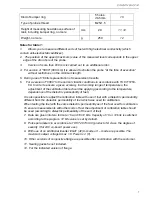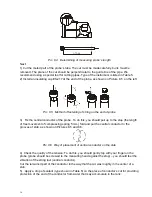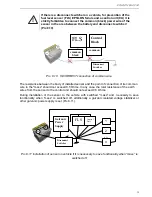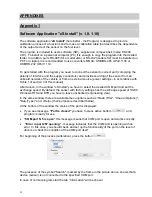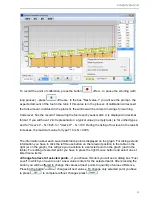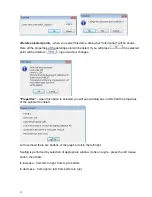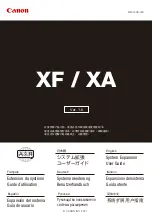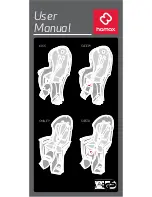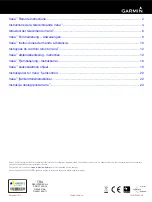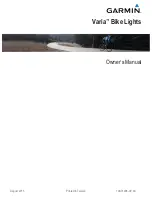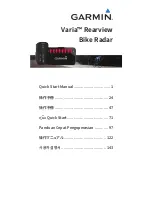
EPSILON ES2,ES4
21
!
WARNING!
Calibration of the tank must be made using the same type of fuel,
with which the sensor will be operating (for example, you can not use petrol
for calibration, if you intend to operate with diesel fuel).
To achieve the most accurate operating features of the sensor it is desirable to make “training”.
It is sufficient to perform the calibration procedure not immediately after installation of a sensor,
but after some time of car’s usage, when 50 – 70% of tank’s fuel capacity is used. During this
time, mechanical clearances will normalize, guaranteed by the rubber gasket flange and a
polymer sealant, and on the entire surface of the probe a stable dielectric fuel film is formed.
If the "training" of the sensor can not be performed, before the calibration of the tank by filling it
with use of a new sensor (probe), the probe must be immersed into the fuel than removed and
you should allow the fuel to drain for 20-30 minutes. If the calibration is performed by the
method of draining, this procedure is not performed.
At the time of calibration you must disconnect the sensor from the on-board controller and
connect it to the port of used PC (requirement to PC and port converter are shown in Table 5).
At the end of calibration a connection to the on-board controller should be restored.
The result of calibration in the form of tank calibration table and user’s data about work
executed is storing on the PC in a format which guarantees the data exchange into Dispatch
Software. Detailed procedure of calibration using software application eS Install is described in
Appendix 1.
10. Maintenance
The sensor is unattended product, but if the rules of vehicle maintenance provide the procedure
of fuel tank prevention; it is advisable to execute simultaneously preventive service of the
sensor.
For sensor’s preventive service you have to:
Perform a complete removal of the sensor (see Pic.10.2);
Wash the probe from inside by the fuel (in which sensor is operating) and blow with
compressed air.
Check own parameters of the measuring head (by using "eS Install").
Perform installation and sealing of the sensor according to the requirements of section 8.
Measuring head of the sensor is not repairable product and during the warranty period
preserves the stability of its metrological parameters.
In the case of failure of the measuring head you must perform the following:
If you want to use vehicle before a new measuring head is installed, it is necessary to make
a partial removal of the sensor (see Pic. 10.1).

